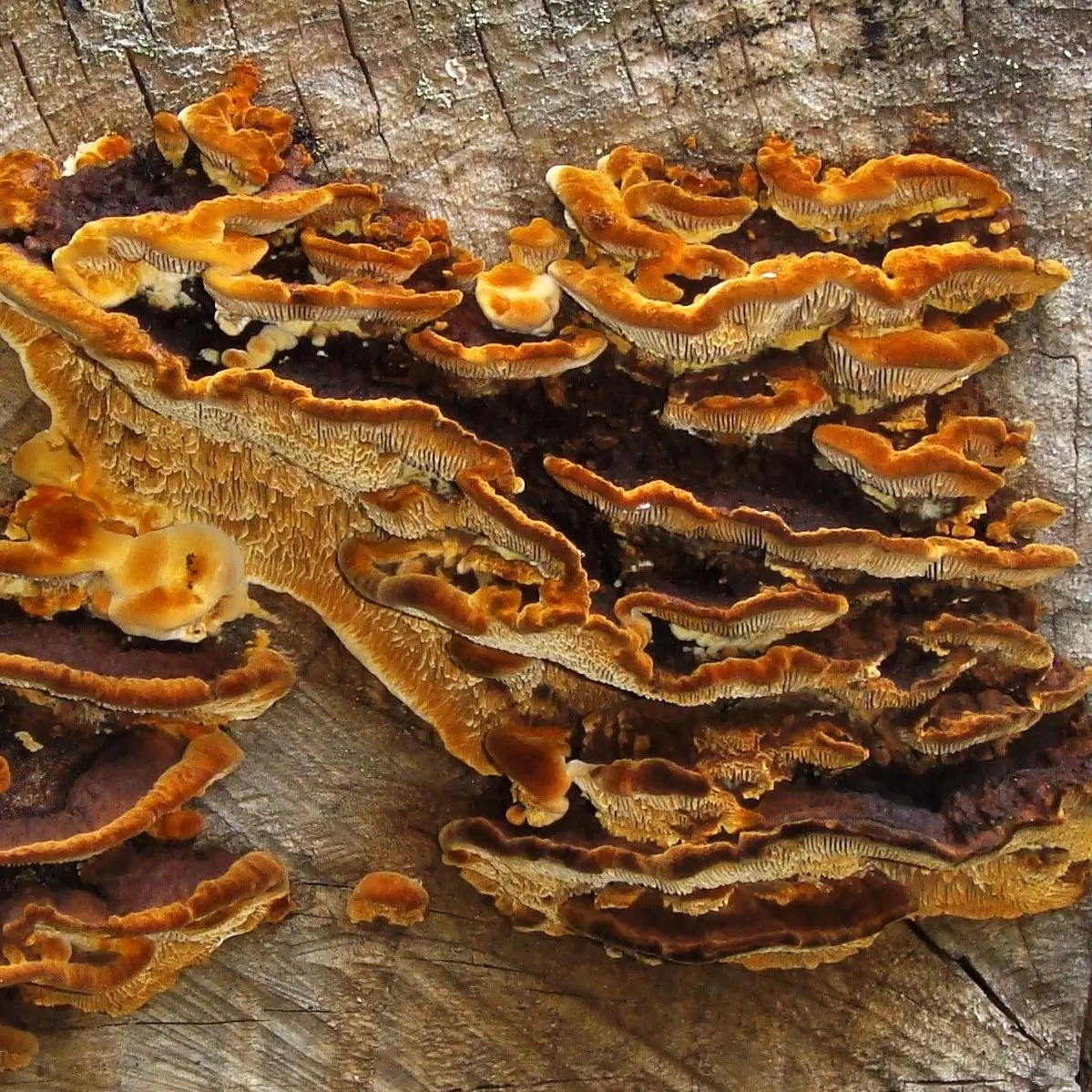Gleophyllum fence (Gloeophyllum sepiarium)
- Division: Basidiomycota (Basidiomycetes)
- Subdivision: Agaricomycotina (Agaricomycetes)
- Class: Agaricomycetes (Agaricomycetes)
- Subclass: Incertae sedis (of uncertain position)
- Order: Gloeophyllales (Gleophyllic)
- Family: Gloeophyllaceae (Gleophyllaceae)
- Genus: Gloeophyllum (Gleophyllum)
- Type: Gloeophyllum sepiarium (Gleophyllum fence)
:
- Agaricus sepiarius
- Merulius sepiarius
- Daedalea sepiaria
- Lenzitina sepiaria
- Lenzites sepiarius

fruit bodies usually annual, solitary or fused (lateral or located on a common base) up to 12 cm across and 8 cm wide; semicircular, kidney-shaped or not very regular in shape, from broadly convex to flattened; surface from velvety to coarse hairy, with concentric texture and color zones; at first from yellow to orange, with age it gradually becomes yellow-brown, then dark brown and finally black, which is expressed in the transition of color to darker in the direction from the periphery to the center (while the actively growing edge retains bright yellow- orange tones). Last year’s dried fruit bodies are deeply hairy, dull brown in color, often with lighter and darker concentric zones.
Records up to 1 cm wide, rather frequent, even or slightly sinuous, fused in places, often overlapping with elongated pores; creamy to brownish planes, darkening with age; margins yellow-brown, darkening with age.
spore print white.
the cloth cork consistency, dark rusty brown or dark yellow brown.
Chemical reactions: The fabric turns black under the influence of KOH.
Microscopic characteristics: Spores 9-13 x 3-5 µm, smooth, cylindrical, non-amyloid, hyaline in KOH. The basidia are usually elongated, the cystids are cylindrical, up to 100 x 10 µm in size. The hyphal system is trimitic.
Intake Gleophyllum – saprophyte, lives on stumps, dead wood and mostly coniferous trees, occasionally on deciduous trees (in North America it is sometimes seen on aspen poplar, Populus tremuloides in mixed forests with a predominance of conifers). Widespread mushroom in the Northern Hemisphere. Grows singly or in groups. The economic activity of a person does not bother him at all, he can be found both in lumber yards and on a wide variety of wooden buildings and structures. Causes brown rot. The period of active growth from summer to autumn, in a mild climate, is actually year-round. Fruiting bodies are more often annuals, but at least biennials have also been noted.
Inedible due to hard texture.
Living on rotten spruce stumps and deadwood, odorous gleophyllum (Gloeophyllum odoratum) is distinguished by large, not quite regular, rounded, angular or slightly elongated pores and a pronounced anise aroma. In addition, its fruiting bodies are thicker, pillow-shaped or triangular in cross-section.
Gleophyllum log (Gloephyllum trabeum) is confined to hardwoods. Its hymenophore consists of more or less rounded and elongated pores, it can take the form of a lamellar one. The color scheme is dull, brown-brown.
Gloephyllum oblong (Gloephyllum protractum), similar in color and also growing mainly on conifers, is distinguished by hairless hats and slightly elongated thick-walled pores.
In the owner of the lamellar hymenophore of the fir gleophyllum (Gloeophyllum abietinum), the fruiting bodies are velvety-felt or bare, rough (but not fleecy), of soft brown shades, and the plates themselves are rarer, often jagged, irpex-like.









